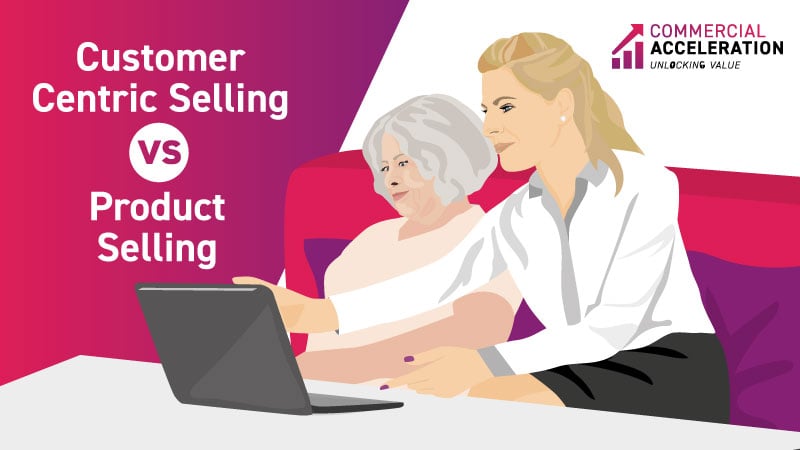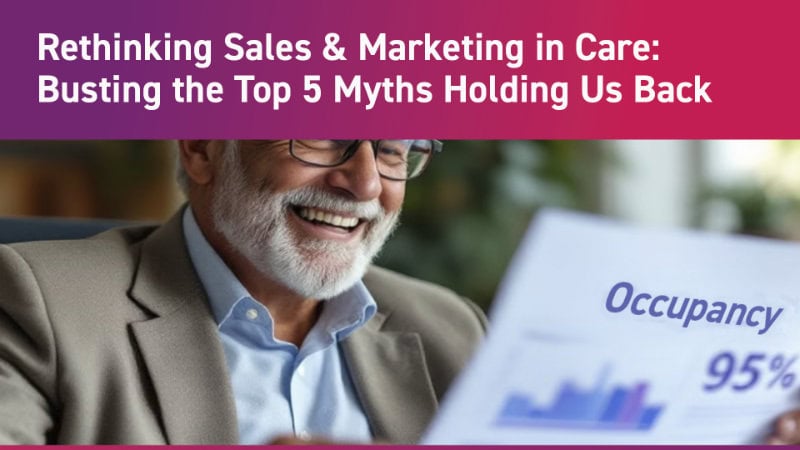Choosing a retirement community is a big decision. Imagine you are trying find a new home where you can feel comfortable, safe, and happy. It’s not just about ticking boxes on a list of features – it’s about finding a place where you feel as if you belong. This is where customer-centric selling makes all the difference.
Let’s explore how focusing on people rather than just products can help retirement communities thrive.
The Current State of Later Living Communities in the UK
Retirement communities are becoming more popular in the UK. As the population ages, more people are looking for quality places to spend their later years. But with so many options out there, how do these communities stand out and attract new residents?
The market is competitive. There are various types of later living options, from independent living to assisted living and nursing care. Each type caters to different needs, and this diversity can make choosing the right community overwhelming for potential residents and their families.
Adding to the complexity, many retirement communities offer similar amenities – fitness centres, communal dining, and social activities. With these features becoming standard, the challenge lies in differentiating one community from another. This is where understanding and catering to the specific needs and desires of potential residents becomes crucial.
Customer-Centric Selling vs. Product Selling
Customer-Centric Selling is all about understanding the needs and desires of potential residents. It’s not just about selling a room – it’s about creating a home. This approach builds strong, lasting relationships by focusing on personal interactions and genuine care.
When we talk about customer-centric selling, we mean putting the resident at the heart of every interaction. It’s about asking the right questions, listening to the answers, and tailoring the offering to meet those needs. This approach creates a sense of belonging and trust, which is invaluable in building long-term relationships.
Statistics support the effectiveness of this approach. For instance, organisations that adopt a customer-centric approach are on average 4-8% more profitable than those that don’t . This isn’t just about revenue, it’s about building a sustainable, thriving community.
Product Selling, on the other hand, focuses on the features of the community – the fancy gym, the swimming pool, the beautiful gardens. While these are important, they don’t necessarily address the deeper needs of potential residents.
Product selling is more transactional. It highlights the tangible aspects of the community but misses out on creating a connection with potential residents. It’s like selling a house by only talking about the number of rooms and ignoring how it can become a home filled with memories and personal touches.
The Benefits of Customer-Centric Selling
When communities adopt a customer-centric approach, they see real benefits. Engaging with potential residents on a personal level makes a big impact. It’s about more than just showing off what the community has to offer; it’s about showing how the community can meet the unique needs of each resident.
Enhanced Engagement: Personal interactions lead to more meaningful connections. When staff take the time to understand what potential residents are looking for, they can offer tailored solutions that resonate on a deeper level. This engagement can start from the very first phone call or visit and continue throughout the resident’s stay.
Trust and Loyalty: Building trust is crucial. When people feel understood and cared for, they are more likely to choose your community and recommend it to others. This leads to increased loyalty and positive word-of-mouth referrals. Trust is built through consistency, transparency, and genuine care – elements that are at the core of customer-centric selling.
Statistics show that enhancing the customer service process can have a significant impact. A remarkable 84% of companies that enhance their customer service process report an increase in revenue . This illustrates the power of a customer-centric approach in driving financial success and building trust.
Real-World Examples
Let’s look at some real-world examples. There are retirement communities that have embraced customer-centric selling and seen fantastic results. These communities listen to their residents, understand their needs, and create personalised experiences.
- Personalised Welcome Packs A community in Kent started offering personalised welcome packs based on new residents’ hobbies and interests. This small touch made newcomers feel valued and understood from day one. The result? Happier residents and a higher occupancy rate.
- Buddy System A community in Surrey implemented a buddy system where existing residents are paired with newcomers. This initiative helped new residents settle in quickly and feel part of the community, leading to higher satisfaction and lower turnover rates.
- Regular Feedback Sessions A retirement community in Brighton holds regular feedback sessions with residents. They actively listen to suggestions and concerns, then make changes based on this input. This practice has led to continuous improvement and high resident satisfaction.
- Tailored Activities A community in Manchester offers activities tailored to residents’ interests. By regularly updating their activity schedule based on resident preferences, they ensure that everyone feels engaged and valued.
Implementing Customer-Centric Selling
So, how can other communities adopt this approach?
Understand Resident Needs
Conduct surveys, focus groups, and one-on-one interviews to gather insights. Know what potential residents are looking for and what their biggest concerns are. This information is gold – it helps shape every aspect of the marketing and sales process.
Personalise Marketing Strategies
Craft messages that speak directly to the needs and desires of potential residents. Use storytelling to create emotional connections. Share stories of current residents who have found happiness in your community. Highlighting real-life experiences makes your marketing more relatable and impactful.
Improve Resident Experience
Make sure every interaction reflects your customer-centric approach. Continuously gather feedback and use it to improve your services. This means listening to residents not just before they move in, but throughout their stay. Small improvements based on feedback can make a big difference in satisfaction levels.
Measuring Success and Refining Strategies
To see if your approach is working, keep an eye on key metrics like occupancy rates, resident satisfaction scores, and referral rates. Regularly gather feedback and be ready to adjust your strategies based on what you learn.
Key Metrics
Monitor how full your community is, how happy your residents are, and how often they recommend you to others. These metrics give you a clear picture of how well you’re doing and where you can improve.
Feedback Loops
The importance of regularly gathering and responding to resident feedback cannot be overstated. It shows residents that their opinions matter and that you’re committed to providing the best possible experience. Use surveys, suggestion boxes, and regular check-ins to keep the feedback flowing.
Final Thoughts
Customer-centric selling is not just a strategy – it’s a mindset. By focusing on the needs and desires of potential residents, retirement communities can build stronger relationships, boost occupancy rates, and create happier environments for everyone.
So, let’s embrace this approach. After all, creating a place that feels like home is about more than just the facilities – it’s about the people and the care you provide.


